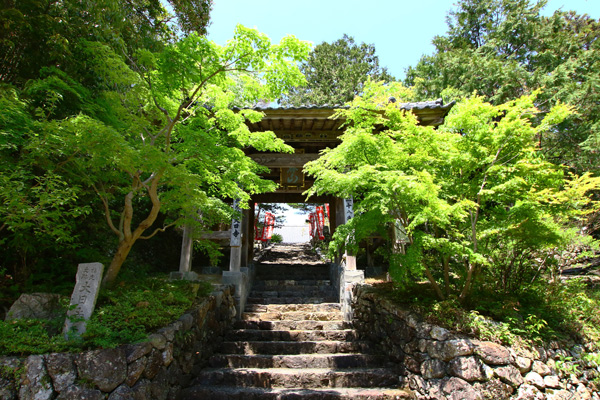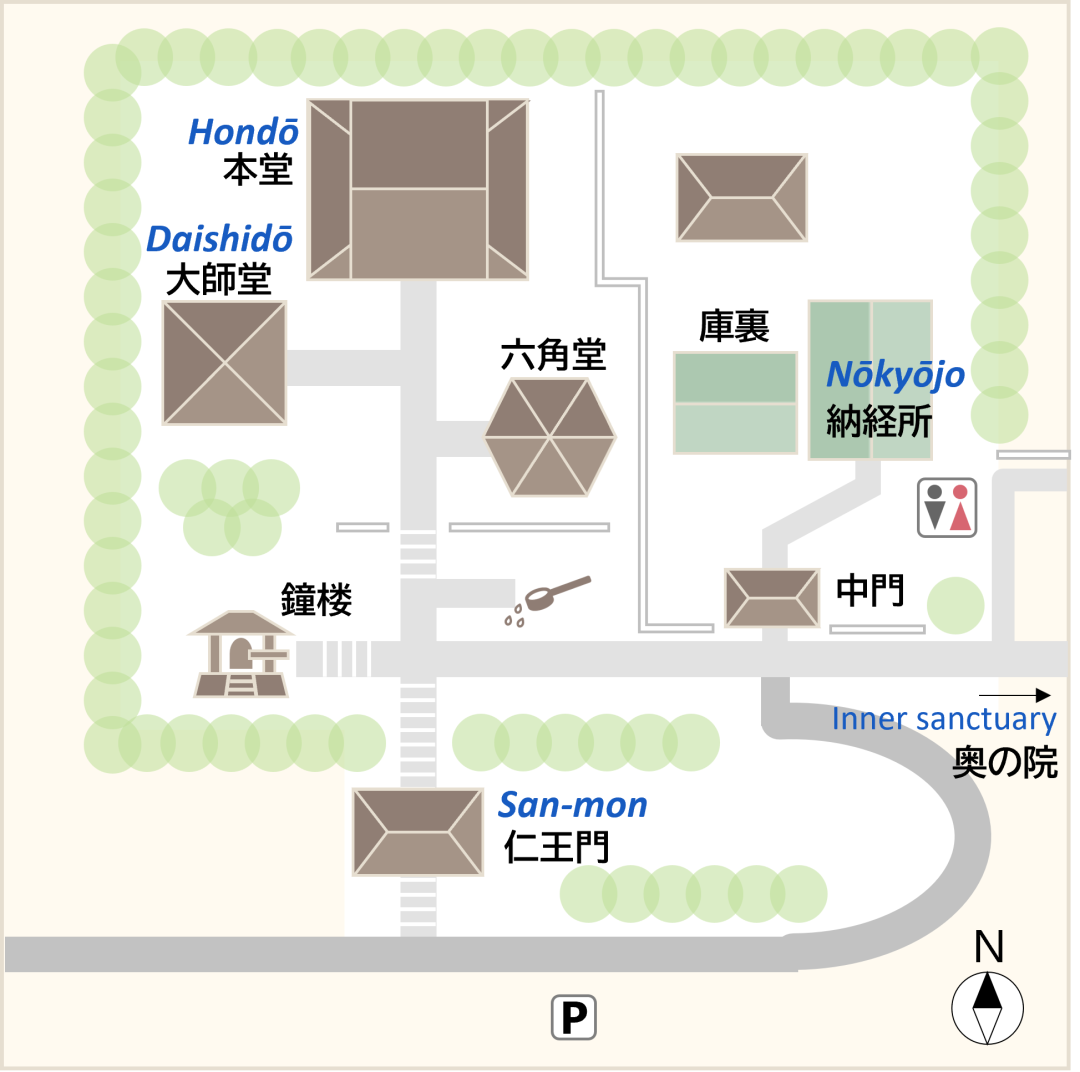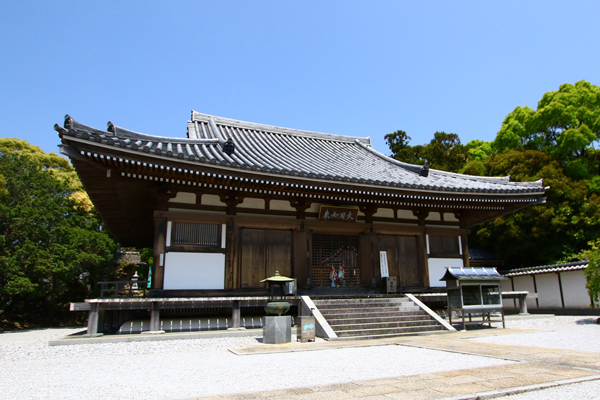The Shikoku Pilgrimage Temple Guide
Temple 28, Dainichiji

Precinct map

History of the temple
The temple grounds are filled with seasonal flowers that delight the eyes of visitors. In early spring, flowers of Japanese Cornel dogwood bloom. In March weeping cherry trees and magnolias bloom. Starting in mid-October, winter cherry trees and coralberry bushes bloom.
According to legend, Gyoki founded Dainichiji by order of Emperor Shomu (reigned 724-749). He carved a statue of Dainichi Nyorai (Mahāvairocana) and enshrined it in the temple. In 815, when Kobo Daishi made a pilgrimage to Shikoku, he carved a statue of Yakushi Nyorai (Medicine Buddha) from a large camphor tree and enshrined it at the temple to pray for the peace of people in the distant future.
Since that time, the temple has prospered. During the Keicho era (1596-1615), it became a temple of the Tosa clan (Kochi), and its buildings were improved. The temple was temporarily closed due to the edicts ordering the separation of Shinto and Buddhism by the new Meiji government in 1868, but the principal image was safe because it was enshrined in the Hondo, which was renamed the Dainichido. The temple was rebuilt in 1884.
The seated statue of Dainichi Nyorai (Mahāvairocana) is one of the largest statues in Shikoku. It is approximately 146 cm tall. It was carved by Gyoki and is made of parquet. The standing statue of Sho Kanzeon Bosatsu (The Bodisattva Who Hears the Sounds of the World), which accompanies the main statue, was made by Kobo Daishi. It is also large, measuring approximately 172 cm in height. Like the seated statue of Dainichi Nyorai, it is designated a National Important Cultural Property. A sacred camphor tree known as Nail Carving Yakushi, which is associated with Kobo Daishi, is located in the temple. It was destroyed by a great wind at the beginning of the Meiji period (1868-1912), but a hall was built on the site where it stood. This sacred tree is said to have power over diseases of the head, eyes, nose, ears, and face.Kobo Daishi Okajisui, clean water selected as one of the 40 best waters in Tosa (Kochi), springs from the side of the Yakushido (Yakushi Hall).
Highlights
Hondo
The Hondo was rebuilt in 1997. It was built of cypress and pine without using any nails.
Daishido
The Daishido was renovated in 1983. The statue of Kobo Daishi was donated by the second lord of Tosa, Yamauchi Tadayoshi.

Details
Names: Hōkaizan, Kōshōin, Dainichiji
Denomination: Shingon sect, Chizan school
Principal Image: Dainichi Nyorai
Founder: Gyoki
Founded: Tempyo era (729-749)
Access
Address: 476, Bodaiji, Noichi-cho, Konan City, Kochi 781-5222
Phone: 0887-56-0638
Parking: 30 cars, 10 microbuses (free)
Lodging: None
Official website: http://dainichiji28.org/
